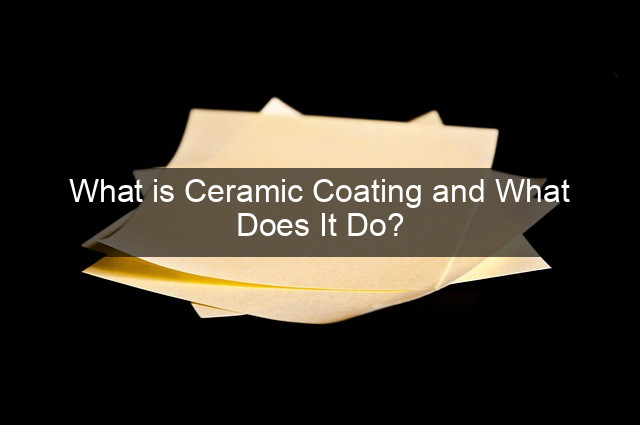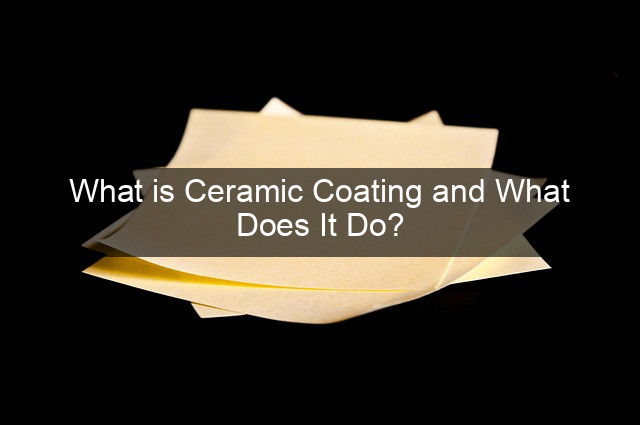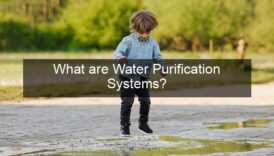What is Ceramic Coating and What Does It Do?

- What is Ceramic Coating and What Does It Do?
- What is Ceramic Coating and What Does It Do?
- The Science Behind Ceramic Coatings
- Chemical Bonding and Protection
- Hydrophobicity and Self-Cleaning Properties
- Enhanced Gloss and Appearance
- Applying a Ceramic Coating
- Professional Application vs. DIY Kits
- Surface Preparation and Application Process
- Curing Time and Aftercare
- Benefits of Ceramic Coating
- Protection Against Environmental Elements
- Reduced Maintenance and Easier Cleaning
- Increased Resale Value
- Types of Ceramic Coatings
- Consumer-Grade Coatings
- Professional-Grade Coatings

What is Ceramic Coating and What Does It Do?
Imagine a shield, invisible yet powerful, protecting your car’s paint from the relentless onslaught of environmental hazards. That’s essentially what a ceramic coating is. It’s a liquid polymer applied to a vehicle’s exterior that chemically bonds with the factory paint, creating a durable, hydrophobic layer. This advanced technology goes beyond traditional waxes and sealants, offering superior protection and an unparalleled shine. But what exactly does this mean for your car? From minimizing swirl marks and UV damage to repelling water and dirt, ceramic coatings provide a comprehensive defense against the elements, preserving your car’s pristine condition and enhancing its resale value. Dive in as we explore the intricacies of ceramic coatings, unveiling their benefits, application process, and long-term advantages.
The Science Behind Ceramic Coatings
Chemical Bonding and Protection
Ceramic coatings are formulated with silicon dioxide (SiO2), the primary component of glass, which is responsible for their exceptional hardness and durability. When applied, the liquid polymer undergoes a chemical reaction, cross-linking with the paint’s clear coat to form a strong, permanent bond. This bonding process creates a sacrificial layer that absorbs the impact of environmental contaminants, preventing them from etching into the paint itself. This protective shield safeguards the vehicle’s finish from everyday wear and tear, ensuring a long-lasting, showroom-worthy shine.
Unlike traditional waxes or sealants that sit on top of the paint, ceramic coatings integrate with the clear coat at a molecular level. This integration provides a significantly higher level of protection and longevity. The strong chemical bond ensures that the coating remains intact even under harsh conditions, offering superior resistance to scratches, swirl marks, and chemical etching.
The unique chemical composition of ceramic coatings allows them to form a highly dense and uniform layer, effectively sealing the paint’s pores and creating a smooth, hydrophobic surface. This hydrophobic property repels water and other liquids, preventing them from adhering to the paint and causing water spots or other blemishes.
Hydrophobicity and Self-Cleaning Properties
One of the most noticeable benefits of a ceramic coating is its exceptional hydrophobicity. The coating creates a surface tension that causes water to bead up and roll off, taking dirt and grime along with it. This “self-cleaning” effect significantly reduces the need for frequent washing and minimizes the risk of scratching during the cleaning process.
The hydrophobic nature of the coating also protects against other environmental contaminants such as bird droppings, tree sap, and insect residue. These substances are less likely to adhere to the coated surface, making them easier to remove without damaging the paint.
This self-cleaning action not only saves time and effort but also contributes to the long-term preservation of the vehicle’s finish. By minimizing the need for abrasive cleaning methods, the coating helps to maintain the paint’s gloss and clarity over time.
Enhanced Gloss and Appearance
Ceramic coatings enhance the depth and clarity of the paint, giving it a rich, glossy finish that surpasses traditional waxes and sealants. This enhanced gloss is a result of the smooth, uniform layer created by the coating, which reflects light more evenly and intensely.
The coating also fills in microscopic imperfections in the clear coat, further enhancing the smoothness and reflectivity of the surface. This results in a more vibrant and eye-catching appearance, making the car look its absolute best.
By protecting the paint from UV damage and environmental contaminants, ceramic coatings help to maintain the vehicle’s original color and shine for years to come. This long-lasting protection preserves the vehicle’s aesthetic appeal and contributes to its resale value.
Applying a Ceramic Coating
Professional Application vs. DIY Kits
While DIY ceramic coating kits are available, professional application is generally recommended for optimal results. Professional detailers have the expertise, equipment, and controlled environment necessary to ensure proper surface preparation and flawless application.
Professional application also involves a meticulous multi-stage process that includes thorough cleaning, decontamination, paint correction, and finally, the application of the ceramic coating itself. This comprehensive approach ensures the coating adheres properly and provides maximum protection.
DIY kits may be a more affordable option, but they require careful attention to detail and can be challenging for those without experience. Improper application can lead to uneven coverage, streaks, and reduced effectiveness.
Surface Preparation and Application Process
Proper surface preparation is crucial for successful ceramic coating application. This involves thoroughly washing and decontaminating the vehicle’s exterior to remove any dirt, grime, or contaminants that could interfere with the coating’s bonding process.
Paint correction, which involves polishing and removing any imperfections in the clear coat, is often performed before applying the ceramic coating. This ensures a smooth and flawless surface for optimal adhesion and shine.
The ceramic coating is then carefully applied in thin, even layers using specialized applicators. Multiple coats may be applied to achieve the desired level of protection and thickness.
Curing Time and Aftercare
After application, the ceramic coating requires a curing period, typically ranging from a few hours to a few days, depending on the specific product and environmental conditions. During this time, the coating hardens and fully bonds with the paint.
Proper aftercare is essential to maintain the coating’s performance and longevity. This includes regular washing with pH-neutral car shampoo and avoiding harsh chemicals or abrasive cleaning methods.
While ceramic coatings offer exceptional protection, they are not impervious to damage. Regular maintenance and occasional top-up coatings can help to prolong the coating’s lifespan and maintain its optimal performance.
Benefits of Ceramic Coating
Protection Against Environmental Elements
Ceramic coatings provide a robust barrier against various environmental elements that can damage a car’s paint. This includes UV rays, acid rain, bird droppings, tree sap, and road salt.
The protective layer shields the paint from these harmful elements, preventing oxidation, fading, and etching. This ensures the car’s finish remains vibrant and protected for years to come.
This protection not only preserves the car’s appearance but also contributes to its resale value by maintaining the paint’s integrity and preventing premature aging.
Reduced Maintenance and Easier Cleaning
The hydrophobic properties of ceramic coatings make cleaning significantly easier. Water and dirt simply bead up and roll off, taking grime with them. This reduces the need for frequent washing and minimizes the risk of scratching during cleaning.

The self-cleaning effect also reduces the time and effort required for car maintenance. A quick rinse or wipe-down is often sufficient to keep the car looking clean and shiny.
This ease of maintenance is a significant advantage for car owners who want to keep their vehicles looking their best without spending hours on cleaning and detailing.
Increased Resale Value
A car with a ceramic coating is generally perceived as being better maintained and protected, which can positively impact its resale value. The coating’s ability to preserve the paint’s condition makes the car more attractive to potential buyers.
The added protection and enhanced appearance provided by the ceramic coating can give the car a competitive edge in the used car market.
Investing in a ceramic coating can be seen as a long-term investment that pays off when it comes time to sell or trade in the vehicle.
Types of Ceramic Coatings
Consumer-Grade Coatings
Consumer-grade ceramic coatings are readily available and designed for DIY application. These coatings typically offer good protection and are a more affordable option compared to professional-grade products.
However, consumer-grade coatings may not offer the same level of durability or longevity as professional-grade coatings. They may also require more frequent reapplication.
These coatings are a good option for car owners who are comfortable with DIY application and want a cost-effective way to protect their vehicle’s paint.
Professional-Grade Coatings
Professional-grade ceramic coatings are typically applied by trained detailers and offer superior performance and longevity compared to consumer-grade products. These coatings are formulated with higher concentrations of SiO2 and other advanced ingredients.
Professional-grade coatings provide exceptional protection against environmental elements, scratches, and swirl marks. They also offer enhanced gloss and hydrophobic properties.
While more expensive than consumer-grade coatings, professional-grade options provide a higher level of protection and can last for several years with proper maintenance.
| Feature | Consumer-Grade | Professional-Grade |
|---|---|---|
| Durability | Good | Excellent |
| Longevity | 1-2 years | 2-5 years |
| Cost | Lower | Higher |
| Application | DIY | Professional |
- Enhanced Gloss: Ceramic coatings amplify the paint’s shine.</li




